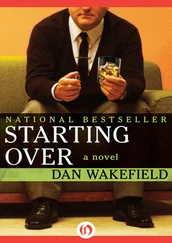Dan Singer - Start-up Nation
Здесь есть возможность читать онлайн «Dan Singer - Start-up Nation» весь текст электронной книги совершенно бесплатно (целиком полную версию без сокращений). В некоторых случаях можно слушать аудио, скачать через торрент в формате fb2 и присутствует краткое содержание. Жанр: Старинная литература, на английском языке. Описание произведения, (предисловие) а так же отзывы посетителей доступны на портале библиотеки ЛибКат.
- Название:Start-up Nation
- Автор:
- Жанр:
- Год:неизвестен
- ISBN:нет данных
- Рейтинг книги:3.5 / 5. Голосов: 2
-
Избранное:Добавить в избранное
- Отзывы:
-
Ваша оценка:
- 80
- 1
- 2
- 3
- 4
- 5
Start-up Nation: краткое содержание, описание и аннотация
Предлагаем к чтению аннотацию, описание, краткое содержание или предисловие (зависит от того, что написал сам автор книги «Start-up Nation»). Если вы не нашли необходимую информацию о книге — напишите в комментариях, мы постараемся отыскать её.
Start-up Nation — читать онлайн бесплатно полную книгу (весь текст) целиком
Ниже представлен текст книги, разбитый по страницам. Система сохранения места последней прочитанной страницы, позволяет с удобством читать онлайн бесплатно книгу «Start-up Nation», без необходимости каждый раз заново искать на чём Вы остановились. Поставьте закладку, и сможете в любой момент перейти на страницу, на которой закончили чтение.
Интервал:
Закладка:
Israel is now home to more than seventy different nationalities and cultures. But the students Sergey Brin was addressing were from the single largest immigration wave in Israel’s history. Between 1990 and 2000, eight hundred thousand citizens of the former Soviet Union immigrated to Israel; the first half million poured in over the course of just a three-year period. All together, it amounted to adding about a fifth of Israel’s population by the end of the 1990s. The U.S. equivalent would be a flood of sixty-two million immigrants and refugees coming to America over the next decade.
“For us in the Soviet Union,” Sharansky explained, “we received with our mothers’ milk the knowledge that because you are a Jew—which had no positive meaning to us then, only that we were victims of anti-Semitism—you had to be exceptional in your profession, whether it was chess, music, mathematics, medicine, or ballet. . . . That was the only way to build some kind of protection for yourself, because you would always be starting from behind.”
The result was that though Jews made up only about 2 percent of the Soviet population, they counted for “some thirty percent of the doctors, twenty percent of the engineers, and so on,” Sharansky told us.
This was the ethos Sergey Brin absorbed from his Russian parents, and the source of the same competitive streak that Brin recognized in the young Israeli students. And it gives an inkling of the nature of the human resource that Israel received when the Soviet floodgates were opened in 1990.
It was a challenge to figure out what to do with an immigrant influx that, although talented, faced significant language and cultural barriers. Plus, the educated elite of a country the size of the Soviet Union would not easily fit into a country as small as Israel. Before this mass immigration, Israel already had among the highest number of doctors per capita in the world. Even if there had not been a glut, the Soviet doctors would have had a difficult adjustment to a new medical system, a new language, and an entirely new culture. The same was true in many other professions.
Though the Israeli government struggled to find jobs and build housing for the new arrivals, the Russians could not have arrived at a more opportune time. The international tech boom was picking up speed in the mid-1990s, and Israel’s private technology sector became hungry for engineers.
Walk into an Israeli technology start-up or a big R&D center in Israel today and you’ll likely overhear workers speaking Russian. The drive for excellence that pervades Shevach-Mofet, and that is so prevalent among this wave of immigrants, ripples throughout Israel’s technology sector.
But it was not just an obsession with education that characterized the Jews who arrived in Israel, from wherever they came. If education was the only factor explaining Israel’s orientation toward entrepreneurialism and technology, then other countries where students perform competitively on math and science standardized tests—such as Singapore—would be start-up incubators as well.
What the Soviet émigrés brought with them is symptomatic of what Israeli venture capitalist Erel Margalit believes can be found in a number of dynamic economies. “Ask yourself, why is it happening here?” he said of the Israeli tech boom. We were sitting in a trendy Jerusalem restaurant he owns, next to a complex he built that houses his venture fund and a stable of start-ups. “Why is it happening on the East Coast or the West Coast of the United States? A lot of it has to do with immigrant societies. In France, if you are from a very established family, and you work in an established pharmaceutical company, for example, and you have a big office and perks and a secretary and all that, would you get up and leave and risk everything to create something new? You wouldn’t. You’re too comfortable. But if you’re an immigrant in a new place, and you’re poor,” Margalit continued, “or you were once rich and your family was stripped of its wealth—then you have drive. You don’t see what you’ve got to lose; you see what you could win. That’s the attitude we have here—across the entire population.” 8
Gidi Grinstein was an adviser to former prime minister Ehud Barak and was part of the Israeli negotiating team at the 2000 Camp David summit with Bill Clinton and Yasir Arafat. He went on to found his own think tank, the Reut Institute, which is focused on how Israel can become one of the top fifteen wealthiest nations by 2020. He makes the same point: “One or two generations back, someone in our family was packing very quickly and leaving. Immigrants are not averse to starting over. They are, by definition, risk takers. A nation of immigrants is a nation of entrepreneurs.”
Shai Agassi, the founder of Better Place, is the son of an Iraqi immigrant. His father, Reuven Agassi, was forced to flee the southern Iraqi city of Basra, along with his family, when he was nine years old. The Iraqi government had fired all its Jewish employees, confiscated Jewish property, and arbitrarily arrested members of the community. In Baghdad, the government even carried out public hangings. “My father [Shai’s grandfather], an accountant for the Basra port authority, was out of a job. We were very scared for our lives,” Reuven told us. 9With nowhere else to go, the Agassis joined a flood of 150,000 Iraqi refugees arriving in Israel in 1950.
In addition to the sheer numbers of immigrants in Israel, one other element makes the role of Israel’s immigration waves unique: the policies the Israeli government has implemented to assimilate newcomers.
There is a direct connection between the history of immigration policies of Western countries and what would become the approach adopted by Israel’s founders. During the seventeenth, eighteenth, and nineteenth centuries, immigration to the United States was essentially open, and, at times, immigrants were even recruited to come to America to help with the settlement of undeveloped areas of the country. Until the 1920s, no numerical limits on immigration existed in America, although health restrictions applied and a literacy test was administered.
But as racial theories started to influence U.S. immigration policy, this liberal approach began to tighten. The U.S. House Judiciary Committee employed a eugenics consultant, Dr. Harry H. Laughlin, who asserted that certain races were inferior. Another leader of the eugenics movement, author Madison Grant, argued in a widely selling book that Jews, Italians, and others were inferior because of their supposedly different skull size.
The Immigration Act of 1924 set new numerical limits on immigration based on “national origin.” Taking effect in 1929, the law imposed annual immigration quotas that were specifically designed to prevent entrance of eastern and southern Europeans, such as Italians, Greeks, and Polish Jews. Generally no more than one hundred of the proscribed nationals were permitted to immigrate each year. 10
When Franklin Roosevelt became president, he did little to change the policy. “Looking at Roosevelt’s reactions over the full sweep of 1938 to 1945, one can trace a pattern of decreasing sensitivity toward the plight of the European Jews,” says historian David Wyman. “In 1942, the year he learned that the extermination of the Jews was under way, Roosevelt completely abandoned the issue to the State Department. He never again dealt really positively with the problem, even though he knew the State Department’s policy was one of avoidance—indeed, obstruction—of rescue.” 11
With the onset of World War II, America’s gates remained barred to Jews. But the chief problem that faced Jews seeking refuge in the 1930s and the early 1940s was that America did not stand alone. Latin American countries opened their doors in only limited ways, while European countries, at best, tolerated only for a time the many thousands who arrived “in transit” as part of unrealized plans for permanent settlement elsewhere. 12
Читать дальшеИнтервал:
Закладка:
Похожие книги на «Start-up Nation»
Представляем Вашему вниманию похожие книги на «Start-up Nation» списком для выбора. Мы отобрали схожую по названию и смыслу литературу в надежде предоставить читателям больше вариантов отыскать новые, интересные, ещё непрочитанные произведения.
Обсуждение, отзывы о книге «Start-up Nation» и просто собственные мнения читателей. Оставьте ваши комментарии, напишите, что Вы думаете о произведении, его смысле или главных героях. Укажите что конкретно понравилось, а что нет, и почему Вы так считаете.












